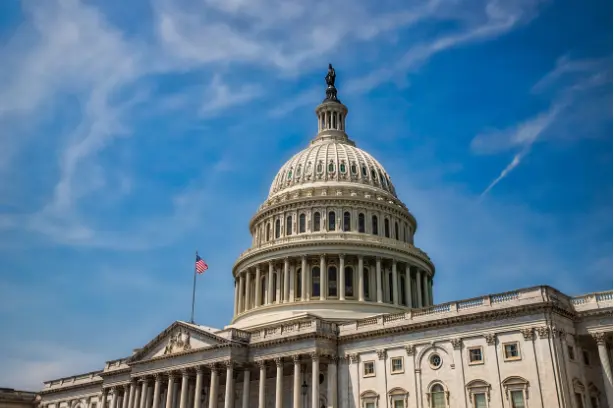By Preserve Gold Research
China and Saudi Arabia have entered into a $7 billion currency swap deal, marking another step towards dedollarization and strengthening trade ties between the two countries. The currency swap agreement, signed between The People’s Bank of China and the Saudi Central Bank, will allow for direct transactions between the Chinese yuan (CNY) and the Saudi riyal (SAR), bypassing the need for US dollars.
This move comes as both countries aim to reduce their reliance on the US dollar in international trade and finance – a trend that has been gaining momentum across the globe in recent years. The US dollar has traditionally been the dominant currency for international trade and finance, but with increasing political tensions and economic uncertainties, countries are looking for ways to diversify their currency reserves and reduce their vulnerability to US policies.
A Mutually Beneficial Agreement
The currency swap deal between China and Saudi Arabia is just the latest in a series of moves made by both countries to strengthen their economic ties and promote the use of their own currencies in bilateral trade.
In 2011, China surpassed the United States as Saudi Arabia’s largest trading partner, exchanging over $64 billion worth of goods that year. Since then, the two countries have worked towards increasing their trade volume and reducing the role of the US dollar in their trade transactions.
For China, the currency swap deal with Saudi Arabia is a significant step towards its goal of internationalizing the yuan and challenging the dominance of the US dollar. Since launching its Belt and Road Initiative (BRI) in 2013, China has been promoting the use of the yuan as a settlement currency for trade deals along its planned economic corridor.
In 2016, China’s yuan officially became part of the International Monetary Fund (IMF)’s Special Drawing Rights (SDR) basket, further solidifying its status as a global reserve currency. Then in 2018, China launched its yuan-denominated crude futures contract, providing a new option for countries to settle their oil trades in a currency other than the US dollar.
By expanding the use of the yuan in major oil-producing countries like Saudi Arabia, China can further strengthen its currency’s position in global trade while also securing a stable supply of oil for its growing economy.
For Saudi Arabia, the currency swap deal provides an opportunity to diversify its foreign currency reserves, which are currently heavily dependent on the US dollar. As the world’s largest oil exporter, Saudi Arabia has long been tied to the US dollar, or the “petrodollar“, as its main source of currency for oil transactions.
However, with the rise of China as a major oil importer and its increasing interest in global energy markets, the Saudi government sees the currency swap deal as a way to hedge against potential risks and diversify its economic ties. Given China’s role as the world’s second-largest economy and its growing influence in global trade, the deal also provides a path for Saudi Arabia to expand its presence in the Asian market.
Both countries stand to benefit from the deal, not only in terms of trade and finance but also in strengthening their political ties. As China looks to expand its global reach and Saudi Arabia aims to diversify its economy, the two countries are finding common ground in pursuing a more multipolar world, less reliant on the US dollar.
With the threat of US sanctions looming over international trade, the currency swap deal between China and Saudi Arabia is a significant step towards insulating their oil trade from potential disruption.
Symbolic of a Broader Trend
Beyond the economic implications, the China-Saudi currency swap deal is symbolic of a broader trend towards dedollarization and the rise of alternative reserve currencies. Similar swap deals have already been signed by China with other major economies, including Brazil, Argentina, and a number of countries along the BRI route.
Outstanding swap agreements involving the yuan reached a new record of $117.1 billion in September, highlighting the growing appetite for alternatives to the US dollar.
Earlier this year, the yuan also surpassed the dollar as the most widely-used currency for cross-border transactions in China — a trend analysts expect to continue as China works towards its goal of making the yuan a truly global currency. While the yuan’s role as a reserve currency is still in its early stages, its share of global reserves has nearly doubled this year, according to data from SWIFT.
Meanwhile, the share of the US dollar in global reserves has been steadily declining for more than two decades, raising concerns about the long-term stability of its position as the world’s dominant reserve currency.
Russia, another major oil exporter and a key ally of China has also been actively reducing its dependency on the US dollar in response to US sanctions. In 2021, the Russian central bank announced that it would eliminate US dollar assets from its National Wealth Fund (NWF) and convert them into Chinese yuan, euros, and gold.
Following the imposition of US sanctions in 2022, Russia also significantly reduced its holdings of US Treasury securities, dropping to just 33 million dollars in June 2023 — the lowest since data has been tracked. The sanctions also triggered a massive shift towards using the yuan for trade.
According to the Russian Central Bank, 75% of all export contracts with China are now settled in yuan, while 25% of transactions with other countries are conducted in the Chinese currency.
The decision by Russia, one of China’s largest trading partners, to embrace the yuan for trade and investment is a significant boost to China’s campaign for dedollarization, as it signals to other countries that there are viable alternatives to the US dollar.
Coupled with the growing internationalization of the yuan and the increasing economic ties between China and other major economies, some economists believe the stage is set for a gradual shift away from the US dollar.
A Return to Sound Money?
As countries like Saudi Arabia, Russia, and China diversify their reserves away from the US dollar, gold has emerged as a key asset for central banks looking to strengthen their financial position. Central bank demand for gold hit a record high of 1,136 tonnes in 2022, marking the third consecutive year of net purchases.
While original estimates for 2023 suggested a slight decline in demand, recent data from the World Gold Council (WGC) revealed that central banks around the world have continued to increase their holdings at a record pace. In the third quarter of 2023, central bank demand for gold rose by 337 tonnes, 120% higher than the previous quarter and the second-highest third-quarter increase in history.
Total net purchases for the first three quarters of 2023 amounted to a staggering 800 tonnes — a 14% increase from the same period in 2022.
While gold has long been valued for its monetary properties, its role as a strategic reserve asset is gaining increased recognition in an uncertain global economic landscape. The continued growth in central bank demand for gold reflects a desire for diversification and protection against potential risks, such as geopolitical tensions and inflation.
A recent Invesco Global Sovereign Asset Management study found that a “substantial share” of central banks were concerned about the precedent set by recent US sanctions. The study also revealed that, in response to these concerns, close to 60% of central banks surveyed said that these risks had made gold more attractive as a reserve asset.
With countries like Russia and China feverishly reducing their dependence on the US dollar, and central banks around the world actively increasing their gold reserves, the global monetary landscape may be on the brink of a significant change. Whether this will ultimately lead to the dethronement of the US dollar as the world’s dominant reserve currency remains to be seen, but the growing interest in gold as a reserve asset signals a potential return to sound money and a more diversified, international reserve system.
As J.P. Morgan famously stated to Congress in 1912, “Gold is money, everything else is credit.” With the uncertain future of credit-based currencies, central banks may be seeking to secure their financial sovereignty with what may be the ultimate form of money – gold.







